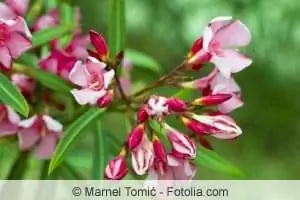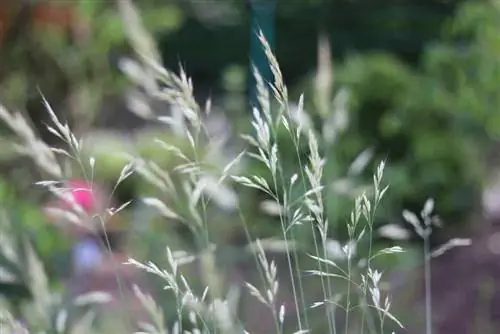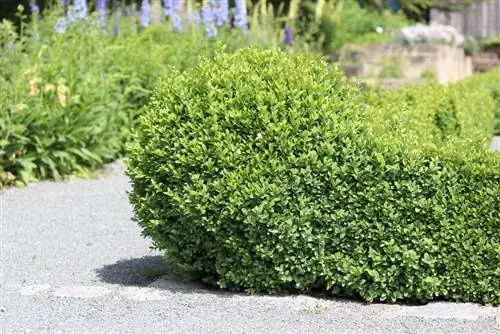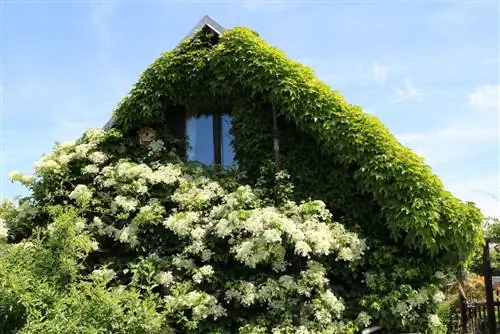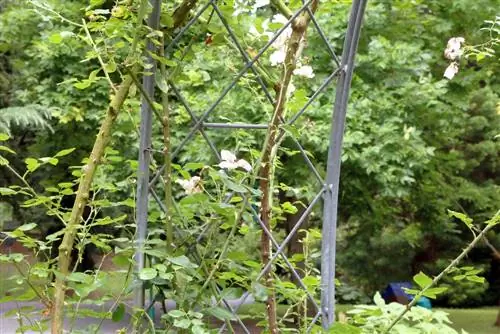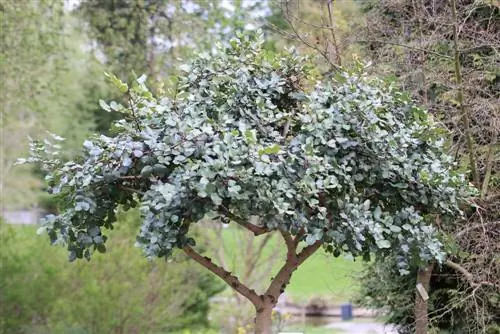- Author admin [email protected].
- Public 2023-12-17 03:39.
- Last modified 2025-01-24 12:45.
Oleander in a pot is a decorative eye-catcher on the terrace and in the garden. This profusely flowering evergreen shrub can grow up to 3 m tall. The different colored flowers can be single or double and in some varieties they can also be fragrant. Rose laurel is highly poisonous in all parts of the plant. Some more robust species, some of which tolerate temperatures down to minus 10 degrees, could, if appropriate, remain outside over the winter in regions with a wine-growing climate with appropriate protection.
Plants
Newly purchased oleander should be transplanted into fresh substrate and a larger pot as soon as possible. To do this, remove the old pot and water the root ball thoroughly, preferably using the immersion method. Then add some soil to the new pot, insert the plant and fill with substrate.
Drainage, as is essential for other plants, can be dispensed with with rose laurel, as this plant tolerates occasional waterlogging without any problems. When it comes to the substrate, you should definitely use high-quality soil from specialist retailers and mix in a long-term fertilizer.
Tip:
Since oleander is a heavy feeder, a long-term fertilizer should be applied when planting.
Location and soil
Oleander loves warm, sunny locations that are protected from wind and rain, especially during growth. Depending on the weather, it can go outside from the end of April or the beginning of May, as it can tolerate light night frosts down to a maximum of minus 5 degrees without any problems. A spot in front of a warming south or southwest wall would be optimal. The house wall is heated during the day by the sun, which in turn releases the stored heat into the environment at night, which would ultimately benefit the oleander.

According to its natural habitat, oleander prefers slightly compacted and calcareous soils. If possible, you should not use commercially available potting soil. It is better to create a suitable substrate from equal parts of potted plant soil and normal garden soil. You can also add some clay.
Tip:
Basically, oleander copes well with slightly acidic and neutral as well as alkaline soils.
Watering and fertilizing
- As temperatures rise in spring, water requirements also increase.
- Rose laurel generally requires a relatively high amount of water.
- He likes to stand with his feet in the water.
- Accordingly, it makes sense to place the bucket in a saucer.
- Water can often stand in the coaster.
- This is usually absorbed quickly.
- It's best to water every day.
- Watere several times a day on hot days in summer.
- The oleander's nutritional requirements are also high.
- So start fertilizing immediately after clearing out.
- Administer a liquid fertilizer for flowering plants once a week.
- Or fertilize once with a slow-release fertilizer with a twelve-month effect.
- Suitable fertilizer is e.g. B. Basacote Plus 12 sts
- With a slow-release or slow-release fertilizer, over-fertilization is almost impossible.
Tip:
Stale, lime-containing tap water and not rainwater should preferably be used for watering. Rainwater would make the soil too acidic over time.
Repotting
Oleander should always have enough space in the pot. Since young oleanders in particular grow eagerly and are very demanding when it comes to nutrient requirements, they should be repotted annually. Older specimens are only replanted every 5-10 years due to their smaller growth. You should think about repotting at the latest when the plant sprouts less vigorously and the abundance of flowers decreases.
The best time for this is spring, directly after clearing out. The new pot should definitely be larger than the old one so that the roots can spread easily. If necessary, the roots at the sides and bottom as well as the shoots can now be shortened slightly to ensure a balanced relationship between root mass and above-ground plant parts.

An appropriate fertilizer is mixed into the fresh soil in order to meet the high nutrient requirements of this plant right from the start. When dosing the respective fertilizer, the manufacturer's information is decisive. If you don't repot oleander, it can happen that the roots will eventually burst the planter.
Tip:
Gloves should always be worn when handling oleander, as all parts of this plant are highly poisonous.
Cutting
Pruning is not absolutely necessary but is nevertheless advisable both in the youth stage and for older plants. The cut prevents baldness and ensures optimal branching. Pruning in the fall before putting away is possible, but not recommended.
This is because the roots of this plant are active all year round and would respond to a cut in autumn with shoots, which should definitely be avoided during wintering. This budding costs the plant a lot of energy, which it then lacks in spring for growth and flower formation.
It's best to prune in spring, when it's still young. Young plants grown from cuttings are usually long and hardly branched. This shoot is cut back to around 10 cm. Afterwards, many new shoots form quite quickly, which, under optimal conditions, bloom in the same year.
Older plants can become bald over time. Then at the latest they should be radically shortened. All shoots are cut back to finger strength, although you can cut back to the framework. Or you can cut back several old shoots to 10-20 cm. Oleander sometimes forms seed capsules, which should be removed as they cost the plant unnecessary energy, which is then not needed to produce flowers.
Tip:
The inflorescences should not be cut off because the flower heads for next year are at their tips.
Wintering
The two most important times when overwintering are putting things away on time and not clearing them out too early.
Putting away
Rose laurel should be put away as late as possible. In October there can already be slight temperatures below zero, but this plant is not as sensitive to frost as many people think. Up to temperatures of minus 5 degrees you can place them on a protected house wall and cover them with fleece or something similar.
As a rule, the sub-zero temperatures don't last long in October and it gets a little warmer again. Then the cover can be removed and overwintering can be delayed. As soon as the frosts become stronger or permanent frost is expected, move the oleander into the house.
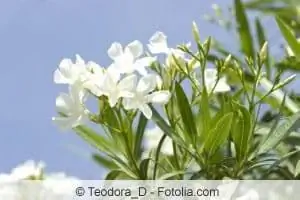
Overwintering should be bright and cool at temperatures of 0-10 degrees. In addition, the winter quarters should be well ventilated to prevent diseases and pest infestation. A cellar or an unheated winter garden is particularly suitable.
Tip:
The colder the winter quarters, the darker the oleander can be.
Clearing out
When the rose laurel can go outside again depends on the conditions in the winter quarters. Plants that have overwintered below 10 degrees can be brought outdoors as early as mid-April due to the hardiness they acquired in the fall.
Plants that have been overwintered in warmer temperatures are much more at risk of frost, as they usually sprout in their winter quarters. Accordingly, these will be published in early / mid-May at the earliest. Oleander should always be put away as late as possible and cleared out as early as possible.
Tip:
To protect oleander plants from sunburn after clearing out, it is best to put them outside in rainy weather.
Conclusion
Oleander is one of the most magnificent Mediterranean plants, provided it finds optimal conditions. It grows as a shrub and is cultivated almost exclusively in containers due to its limited frost hardiness. To get it through the winter well, you should leave it outside for as long as possible and put it back outside as soon as possible. Oleander can easily tolerate temperatures down to minus 5 degrees.

